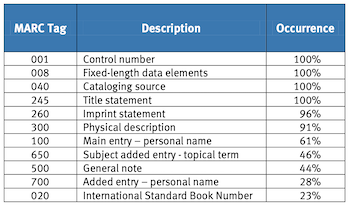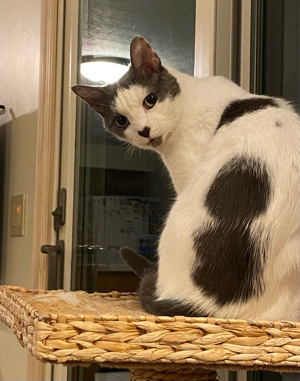Issue 96: Metadata
Metadata is at the core of what libraries do. ("metadata" is one of the most common tags on this here library technology blog.) We gather information about the resources available to patrons, then massage it and slice it and sort it and display it in ways that help patrons find what they need. I was thinking about metadata because of a thread that ran here in Thursday Threads 12 years ago. That is the first thread in this issue, and it is followed by more recent articles about metadata.
- The Most Important Library Metadata
- ICOLC Statement on the Metadata Rights of Libraries
- What's in a name?
Feel free to send this newsletter to others you think might be interested in the topics. If you are not already subscribed to DLTJ's Thursday Threads, visit the sign-up page. If you would like a more raw and immediate version of these types of stories, follow me on Mastodon where I post the bookmarks I save. Comments and tips, as always, are welcome.
The Most Important Library Metadata
The outliers in this case are those elements that appear in a large number of records — that is, what might be considered “core” elements that are used to describe the vast majority of library owned material. Those “outliers” can be categorized according to three general purposes:
- Provenance and Identity: identifiers (e.g. ISBN, OCLC, etc.) and cataloging source (040)
- Elements useful for discovery: title statement (245), personal names (100, 700) and subject (650)
- Elements useful for understanding and evaluation: publication statement (260), physical description (300), and notes (500)
That’s it. In a nutshell you have the very core of bibliographic description as defined by librarians over the last century or so.
Back in 2011, Roy Tennant posted a summary of this research on the fields that libraries use most often when describing stuff. It pointed to a report from which the above table is taken, Implications of MARC Tag Usage on Library Metadata Practices. WorldCat is the name of a database of records from libraries. As the table shows, every record has some mandatory elements: a control number, a set of codes called the "fixed length data elements", a source for where the record came from, and the title. Most records also have an imprint (96%) and a physical description (number of pages, etc.—91%). In library-speak, the "main entry" is the person or organization responsible for the work, and the research found that 61% of records had a personal "main entry"...what we could commonly call the author. 46% of records have a topical subject and 44% had a descriptive note of some sort. Rounding out the last entries in the table, 28% of records had an additional responsible entry—a second author or illustrator or similar—and 23% of records had an ISBN.
Now library records have hundreds of fields and variations of fields to describe more esoteric aspects of a work, but these are the most common. Just a fun fact for your next dinner party.
ICOLC Statement on the Metadata Rights of Libraries
Metadata and the metadata services that describe library collections are critical in supporting content discovery, knowledge creation, and libraries’ public missions. Metadata describing library collections is not typically copyrightable, and should be considered freely shareable and reusable under most circumstances. However, some industry players restrict libraries’ rights to use such metadata through contractual terms and market influence. Such restrictive activity is out of alignment with libraries’ needs and public, not-for-profit/educational missions. The endorsers of this document urge all organizations, whether for-profit or not-for-profit, to uphold libraries’ rights and interests to use, re-use, adapt, aggregate, and share metadata that describes library collections to serve the public interest, without restriction or limitation.
As you might guess, metadata is really important to libraries. And libraries have a natural ethos to cooperate with one another to share the burden of creating and maintaining that metadata. Not all of the actors in the metadata world, though, are naturally so cooperative, and this statement from ICOLC emphasizes the need to keep this cooperative ethos going for the benefit of all libraries.
What's in a name?
Because of both the great variety of name forms and the variability of applications that make use of names, I recommend a metadata vocabulary that follows the principle of minimum semantic commitment. This means a vocabulary that includes broad classes and properties that can be used as is where detailed coding is not needed or desired, but which can be extended to accommodate many different contexts.
This is a great article if you like going down rabbit holes. In the Western world (the overwhelmingly large number of Thursday Threads readers), you'll see a form ask you for first name, last name, and sometimes middle name. What happens, though, when names are much more complex than that:
- When you add a birth date and/or death date to disambiguate people with the same name.
- When you encounter titles ("Sir") or a generational ("Jr.") suffix.
- What about cultures that by convention put their family name before their given name.
These are the types of things that Karen Coyle explores in this blog post.
Who me?

Hopefully Alan is looking healthier now. He was on a steady path towards completely rejecting the food we had for him. Fortunately, we found some wet food and some kibble that he likes to eat and is good for his sensitive stomach. Unfortunately, though, we've had one room-clearing episode of flatulence that may be caused by this new food, so we might be back to the drawing board.